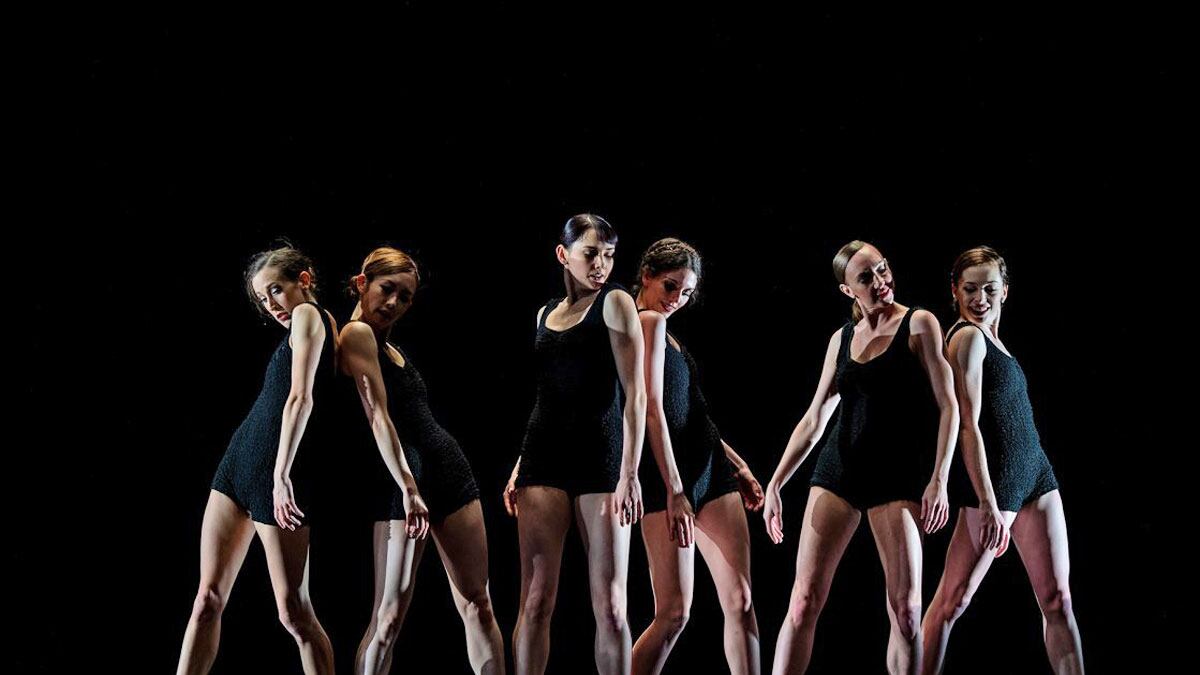There's an interlude in the ballet Fluidity of Steel that looks like the aftermath of a football game. The 12 male dancers wear tight, muscle-sleeve shirts and white leggings, at one point running around the stage chest-bumping and yelling a call-and-response of "woo" and "yeah" like their team just won a game. The hyper-masculine chaos resolves when the dancers form a line across the stage, strike muscle poses and stare at the audience with expressions that are somewhat aggressive, somewhat dead in the eyes.
It's an intriguing and occasionally hilarious start to Oregon Ballet Theatre's new show, Man/Woman, a series of short ballets selected to explore the art form's reliance on gender roles. The show comprises two pieces performed by all-male dancers, two by all-female dancers and one in between that's performed by both genders.
Fluidity of Steel is followed by a classic piece on the other extreme end of the gender spectrum, the 1905 short ballet The Dying Swan. The piece is intensely technical, and soloist Jessica Lind performs it with the carefully controlled grace it demands. She hovers over the stage en pointe and folds to the ground with impeccable restraint, arms outstretched for melodramatic effect. Lind gives the impression of quivering at all times, an effect that's heightened by her stiff white tutu that flutters with every move.
Since the first two pieces illustrate ballet's tendency to cling to gender roles, when the curtain falls for intermission, one can't help but hope the second half of the show will break through those parameters.
But for the most part, the works in the second half of the show seem like they're working within the categories outlined in the first half, not against them. In Left Unsaid, by OBT's resident choreographer Nicolo Fonte, the men wear black suits and the women tightly cropped mint-green leotards. In one part of the show, the three male dancers face the audience from chairs at the back of the stage while the three women dancers perform in front of them. They repeat a strange motion in which they raise their elbows to shoulder height, then hinge sideways at the hips. At the end of the interlude, the men stand up in unison and lie next to their chairs. The women take their seats, then repeat that same elbow movement. Except this time, they extend their elbows to rest atop a male dancer's foot.
It's a satisfying twist, but one that just seems to point out that gender exists in ballet. Though Man/Woman is intended to be open-ended, using ballet to comment on the binary seems a little like asking a fish to describe water.
But then, we get to Jirí Kylián's Falling Angels. The final work in the show, the ballet is performed by an all-woman cast, but their movements are neither masculine nor feminine. In fact, they hardly look human. The dancers squirm on the floor like insects or thrash their limbs with their heads lifted to the sky, like they're caught in some violent trance. Set to fast-paced bongo drums played so cleanly they sound as if they're being plucked, Falling Angels is both fervent and controlled.
There, the show lives up to its progressive pretense. What's more, it proves ballet's ability not just to mimic life but to push past it.
SEE IT: Man/Woman is at the Newmark Theatre, 1111 SW Broadway, obt.org. 7:30 pm Thursday-Saturday, through April 21. $29-$102.

